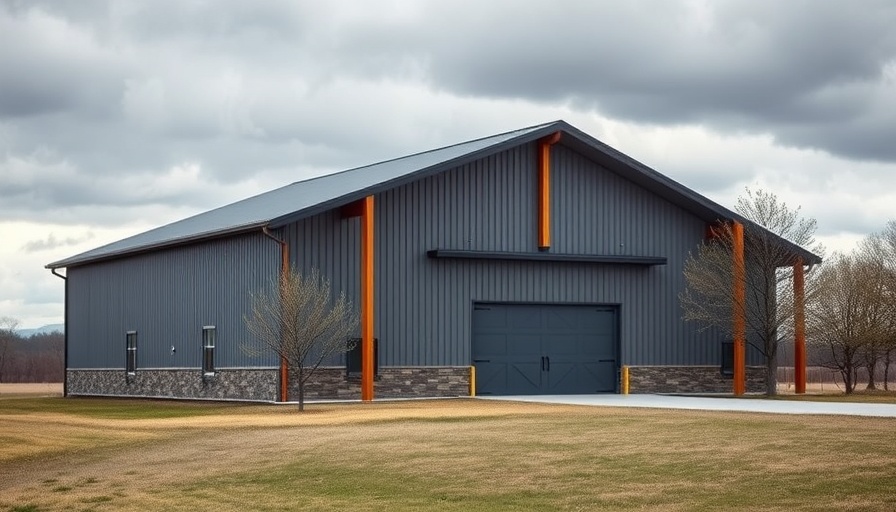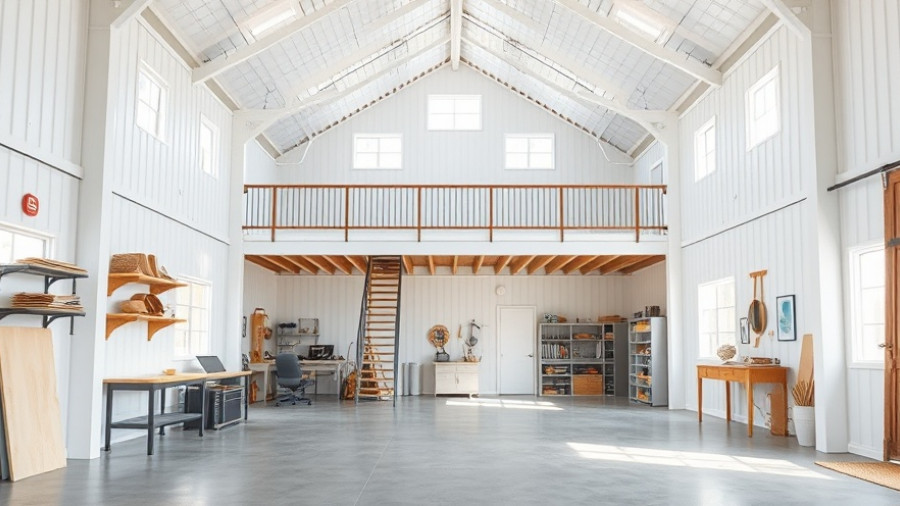
Maximizing Energy Efficiency: A Guide to Barndominiums
As home design continues to evolve, barndominiums have gained popularity as an efficient and stylish living solution. Often misunderstood, these metal buildings can actually provide impressive energy savings when constructed thoughtfully. With advancements in insulation technology and construction methods, anyone can build a barndominium that doesn't just look good but is also economically efficient.
1. Effective Insulation Techniques
Insulation acts as a barrier to heat transfer, making it crucial for energy efficiency. Post-frame construction outperforms traditional stick-built homes due to the continuous insulation it offers. By using long wall girts instead of stacked wall studs, builders can minimize the thermal bridges, which are known to allow energy loss. Spray foam insulation, with its high R-value, is a recommended choice for keeping indoor temperatures comfortable without excessive energy expenditure.
2. Strategic Placement of Windows and Doors
While windows are essential for natural light, their placement can drastically affect energy efficiency. Strategically positioning operable windows can facilitate cross-ventilation, reducing reliance on HVAC systems. Moreover, selecting energy-efficient windows with low-e coatings will diminish heat transfer, keeping your barndominium cooler in summer and warmer in winter.
3. Choosing Sustainable Building Materials
Using green materials can lead to not only energy savings but also a lower environmental footprint. Materials like reclaimed wood or recycled steel are not only aesthetically pleasing but are also energy-efficient choices for construction. These materials often have a smaller carbon footprint in their production, making them better for the planet.
4. Incorporating Energy-Efficient Appliances
Your choice of appliances can make a significant difference in your energy consumption. Opting for ENERGY STAR-rated appliances not only conserves energy but can also lower utility bills significantly over time. These appliances are designed to use less electricity and water, directly contributing to more sustainable living.
5. Integrating Smart Technology
Smart home technology has advanced rapidly, offering innovative solutions for energy management. From smart thermostats that learn and adapt to your schedule to energy monitors that provide consumption insights, these technologies allow homeowners to manage their energy use proactively.
6. Enabling Renewable Energy Options
To further enhance energy savings, consider integrating renewable energy sources, such as solar panels. While the initial investment may be higher, the long-term savings on electricity cost can be substantial, and many states offer tax incentives to offset these expenses.
7. Planning for Energy Efficiency in Design
From the initial blueprints to the final touches, keeping energy efficiency top-of-mind will yield the greatest savings long-term. Collaborating closely with architects and builders who understand sustainable practices ensures your barndominium meets efficiency goals.
This comprehensive approach to building your barndominium fundamentally transforms what many perceive as cost-prohibitive metal structures into models of energy efficiency and sustainability. By understanding and implementing these seven strategies, you can create a living space that is not only beautiful but also conserves resources, saving money in the long run and positively impacting the environment.
Ready to transform your vision into reality? Join our community for insights directly related to sustainable architecture and start your journey towards energy-efficient living today!
 Add Row
Add Row  Add
Add 




Write A Comment